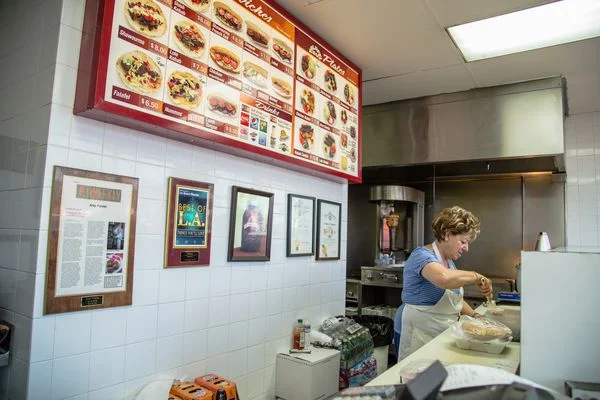How Armenians From Across the World Built a Community Through Food in Los Angeles
At a falafel joint in a crowded Hollywood strip mall, two hungry strangers squeeze into a red booth and become friends over a late lunch. “Can I sit here?” one asks. “Of course,” the other replies in Armenian. “You’re more than welcome.”
The sun is setting as the smell of garlic and a spicy sausage called sujuk fill the air. A customer washes down his meal with some tahn, a minty yogurt drink, and the cook drops more falafel into a vat of oil while talking to a friend in a mix of Armenian and Arabic, chickpea balls in one hand and a phone in the other. This small, cozy storefront recalls the alleyways of the lively, old Armenian neighborhood of Bourj Hammoud in Beirut, Lebanon, where hospitality is paramount and no one who sits at your table and shares food and drink with you is a stranger.
Just a few miles away, a group of women in a bakery make piroshki, fried dough filled by hand with meat or potato. A street food exemplifying the quickest and cheapest way to eat in Armenia, the piroshki came to prominence during the country’s 70-year-long membership in the Soviet Union, when dishes and culinary traditions were often integrated and shared amongst member countries. Across town, a sit-down restaurant prepares dishes full to the brim with soft, fluffy rice and the ground, skewered beef known as luleh kabab, recipes perfected by an Armenian family from Iran.
All of these components make up part of the modern Armenian food lexicon. In fact, if you want to understand the ancient, diverse, and often tragic history of Armenians, you can start by looking at the food they eat. But this story isn’t an easy one. It’s complex, reflecting the frequency with which Armenians have had to remake their lives as refugees or immigrants in foreign lands.
Read the rest of this project commissioned by the Museum of Food and Drink and Eater
